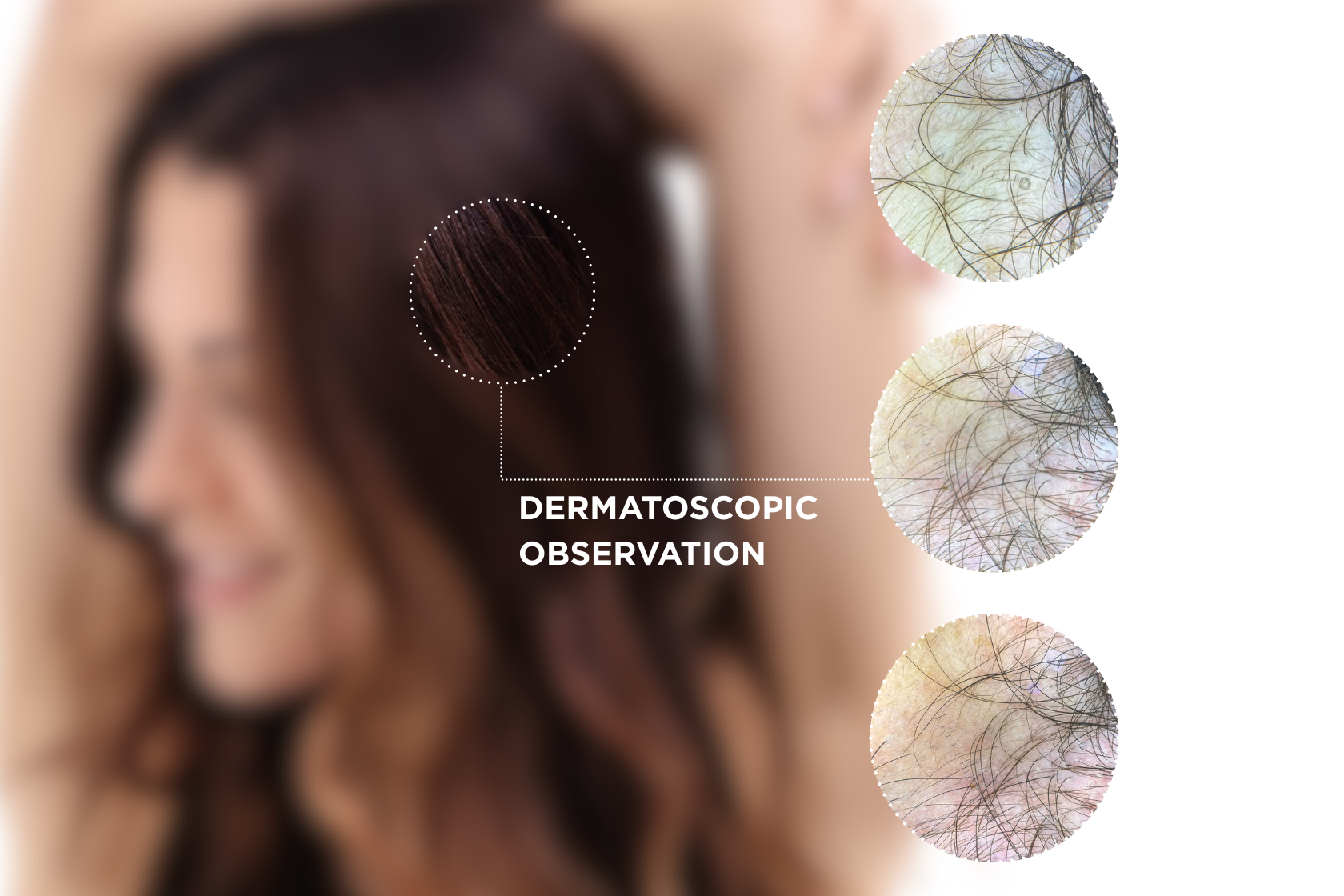Follicular regeneration is a key goal in the treatment of various forms of alopecia and scalp disorders. In recent years, non-invasive technologies such as 448 kHz resistive capacitive radiofrequency (RFCR) have shown promising results as therapeutic adjuvants. This article describes a relevant dermoscopic finding after the application of radiofrequency with the HEBE device, with emphasis on early indicators of follicular neogenesis.
In the evaluated image, multiple fine, short, and vellus-type hairs are observed, emerging from active follicular units. The uniform arrangement and correct anatomical orientation of these villi, without evidence of perifollicular inflammation, constitutes a characteristic finding of an initial anagen phase, indicative of active regeneration of the hair follicle.
Additionally, a visible but non-congestive perifollicular vascularization is observed, which suggests an adequate microenvironment for the nutritional support of the follicle. The surrounding skin shows structural integrity, adequate hydration and homogeneous texture, with no signs of irritation or epidermal damage.
Proposed Mechanism
The presence of new hairs in the early stage of growth suggests a stimulated regenerative response. It is postulated that the 448 kHz radio frequency exerts its effect through three main mechanisms:
- Mitochondrial stimulation, improving ATP production and cellular functionality.
- Modulation of the dermal microenvironment, favoring the activation of follicular stem cells.
- Promotion of angiogenesis, improving perfusion and the supply of oxygen and nutrients to the follicular matrix.
These synergistic effects would create the ideal conditions for follicular neogenesis and prolongation of the anagen phase.
Clinical Implications
From a clinical point of view, the appearance of new hairs in previously sparse or low-density areas supports the hypothesis of effective follicular reactivation. This finding is consistent with the expected effects after sessions with HEBE technology, and suggests a relevant potential as an adjuvant treatment in conditions such as:
- Telogen effluvium
- Androgenetic alopecia in early stages
- Structural alterations of the scalp
Conclusion
The dermatoscopic findings presented constitute early visual evidence of regenerative activity in the hair follicle induced by radiofrequency HEBE. These results reinforce the value of this technology as a non-invasive therapeutic tool in the comprehensive management of hair health.
By Dr. Paola Leidenz

